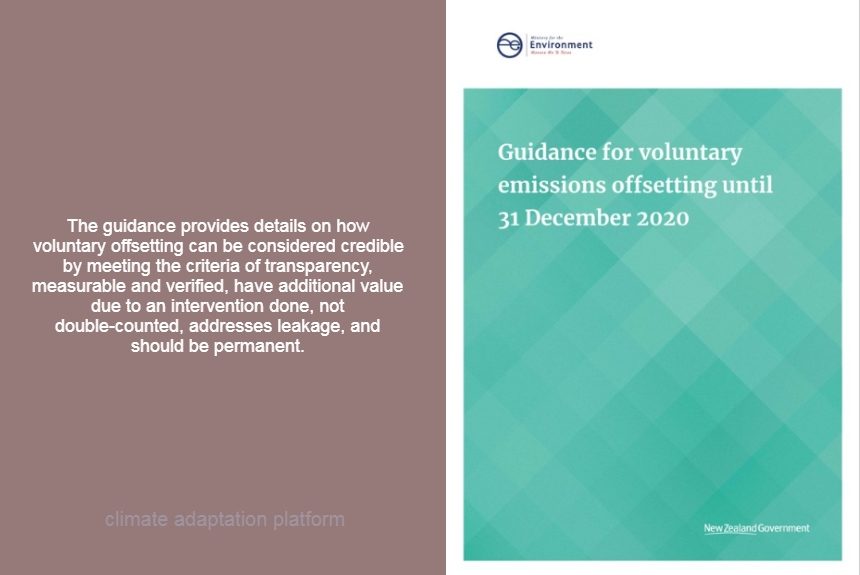According to Hon. James Shaw, New Zealand’s Minister for Climate Change, there is a massive appetite in New Zealand to act on climate change and reach net-zero carbon dioxide emissions (Government Releases First, 2019).
The Ministry for the Environment has published Guidance for Voluntary Emissions, a guide for organisations, entities, and individuals who wish to achieve carbon neutrality and offset their emissions.
The guide only applies to voluntary emissions offsetting by an organisation. It does not apply to regulated entities or sectors that the government requires to report their emissions, which have ‘surrender obligations and reporting obligations.’
These sectors, apart from agriculture, include forestry, waste, synthetic gases, industrial processes, liquid fossil fuels, and stationary energy sources such as electricity generation and industrial heating.
The guidance details how voluntary offsetting can be considered credible by meeting the criteria of transparency, measurability, and verification, having additional value due to an intervention, not being double-counted, addressing leakage, and being permanent.
The New Zealand Unit (NZU) is the primary unit of trade in the New Zealand Emission Trading Scheme (NZ ETS), where one NZU represents one tonne of carbon dioxide or the equivalent for other greenhouse gases.
Currently, there is no direct link between the NZU of the NZ ETS and New Zealand’s international emissions reduction target for 2020. How New Zealand’s emissions are accounted for and reported internationally differs from how emissions are accounted for in the NZ ETS.
THE NZ ETS is a domestic policy and operates domestically under the Ministry for the Environment.
However, voluntary emissions can still be used to achieve both international and domestic reductions by following a two-step Kyoto cancellation process. Voluntary offsetting using New Zealand Units (NZUs) should follow a Kyoto cancellation process to avoid double counting, which is counted both against a national target and as a voluntary offset (Guidance for Voluntary, 2019).
The guide provides a detailed explanation of how this is done. Get a copy by clicking on the button below:
The guidance will remain effective until 31 December 2020; however, work is currently underway to provide an updated guide for the period after 2020.
New Zealand continues to progress in its commitment and cooperation to achieving national and international climate change programs through the Guidance document, the Zero Carbon Act, and other climate adaptation and mitigation plans.
Sources:
Government releases first national voluntary emissions offset guidelines. (2019, September 18). Beehive. Govt. NZ. Retrieved from https://www.beehive.govt.nz/release/government-releases-first-national-voluntary-emissions-offset-guidelines
Ministry for the Environment. 2019. Guidance for voluntary emissions offsetting until 31 December 2020. Wellington: Ministry for the Environment. Retrieved from https://www.mfe.govt.nz/sites/default/files/media/Climate%20Change/guidance-for-voluntary-emissions-offsetting-until-31-December-2020_0.pdf



Leave a Reply